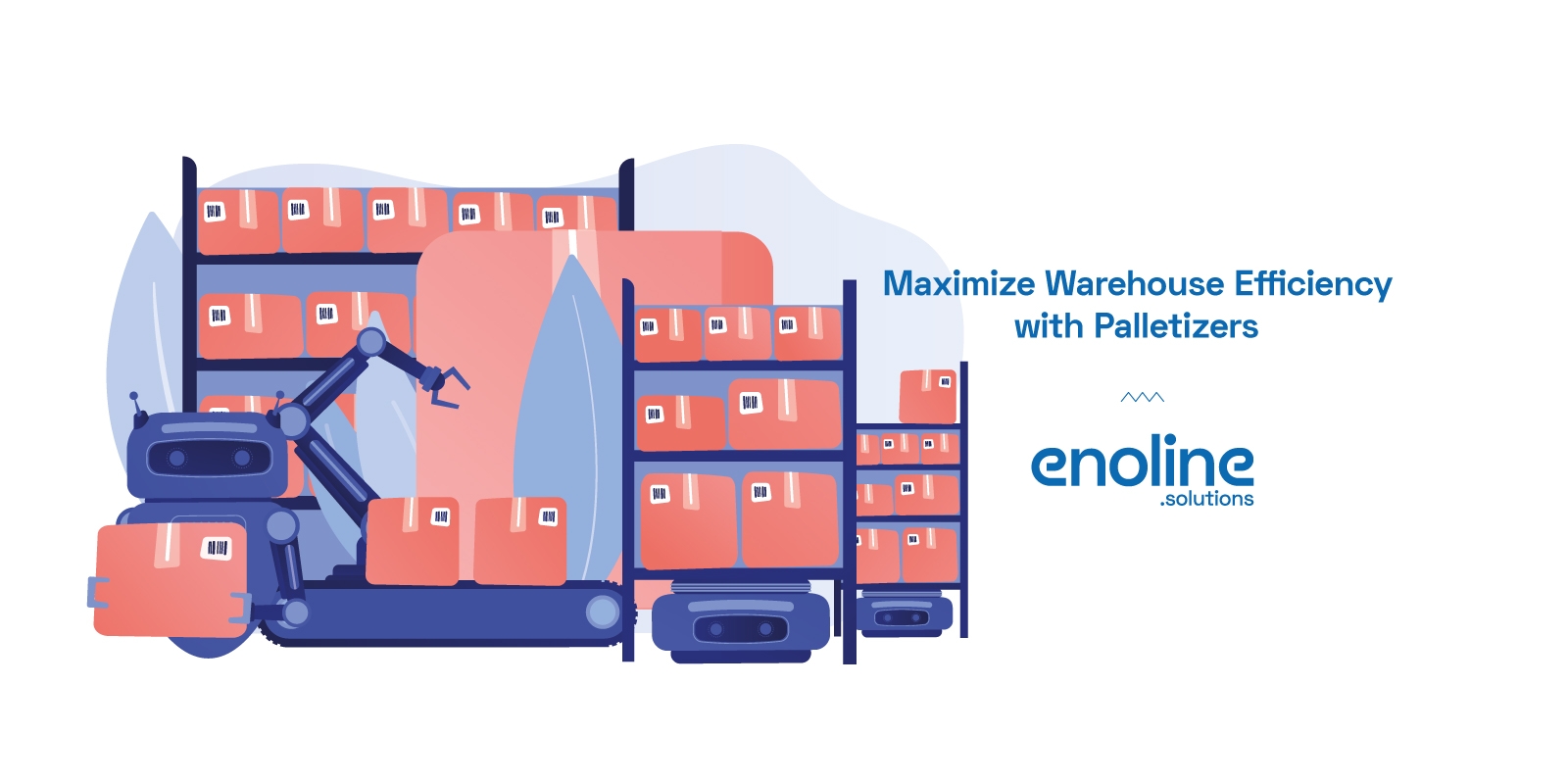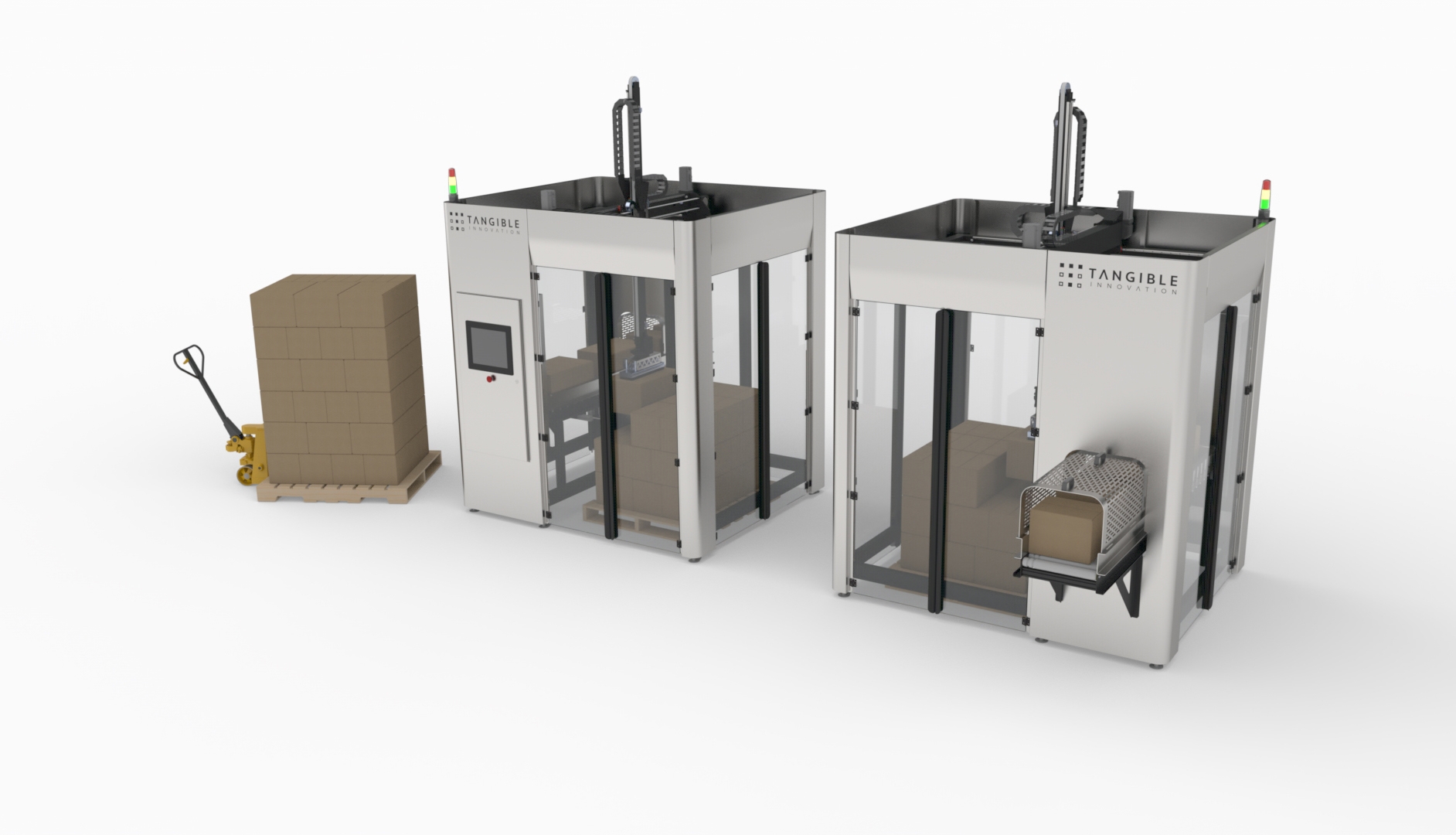July 20th
Maximize Warehouse Efficiency with Palletizer

Understanding the Importance of Warehouse Efficiency
Efficient warehouse management plays a pivotal role in reducing operational costs, ensuring timely deliveries, and maintaining customer satisfaction. With growing consumer demands and market dynamics, warehouses are under constant pressure to optimize their processes and maximize productivity.
What is a Palletizer and How Does it Work?
A palletizer is a sophisticated material handling equipment designed to stack and arrange products onto pallets efficiently. It automates the otherwise labor-intensive process of manual palletizing, providing a faster, more accurate, and reliable solution for warehouse operations.
Types of Palletizers
Automatic Palletizers
Automatic palletizers are fully automated systems capable of handling high production rates. They are ideal for large-scale warehouse operations where speed and efficiency are paramount.
Semi-Automatic Palletizers
Semi-automatic palletizers require some manual intervention while still offering significant automation benefits. They are suitable for medium-sized warehouses with varied product lines.
Robotic Palletizers
Robotic palletizers offer incredible flexibility and precision. They can adapt to handle different product sizes and shapes, making them perfect for warehouses with diverse products.
Low-Level Palletizers
Low-level palletizers are designed to work at ground level, making them easy to access and maintain. They are suitable for smaller warehouses with limited space.
High-Level Palletizers
High-level palletizers operate at an elevated level, allowing for streamlined product flow. They are ideal for warehouses with ample vertical space and high throughput requirements.
Advantages of Using Palletizers
Increased Productivity
Palletizers can significantly increase warehouse productivity by reducing manual labor, minimizing errors, and achieving consistent stacking patterns.
Enhanced Safety
Automated palletizing eliminates the risk of physical strain and injuries associated with manual handling, ensuring a safer work environment for warehouse staff.
Improved Load Stability
Palletizers arrange products with precision, ensuring stable and secure loads during transportation, reducing the chances of product damage.
Space Optimization
Palletizers optimize the use of warehouse space by arranging products efficiently, leaving minimal wasted space on pallets and racks.
Versatility in Handling Different Products
Robotic palletizers can adapt to handle various product types and sizes, making them versatile and suitable for diverse warehouses.
Factors to Consider When Choosing a Palletizer
Selecting the right palletizer for a warehouse involves careful consideration of several factors to ensure optimal performance and efficiency.
Production Rate
The palletizer's capacity must align with the warehouse's production rate to prevent bottlenecks and maintain a smooth workflow.
Types of Products
Different palletizers are designed for specific product types, so it's essential to choose one that suits the warehouse's product range.
Space Constraints
Warehouses with limited floor space may require compact palletizer models to make the most of available areas.
Budgetary Considerations
The cost of the palletizer and its return on investment should be evaluated to determine its affordability and long-term benefits.
Maintenance and Support
Choosing a palletizer with accessible maintenance support and spare parts availability ensures uninterrupted operation and minimal downtime.
Integrating Palletizers into Warehouse Operations
Implementing palletizers into existing warehouse operations requires a well-thought-out strategy for seamless integration.
Workflow Analysis
Conducting a thorough analysis of the warehouse's current workflow helps identify areas where a palletizer can have the most significant impact.
Operator Training
Warehouse staff should receive comprehensive training on operating and maintaining the palletizer to maximize its potential.
Maintenance Schedule
Establishing a regular maintenance schedule is crucial for keeping the palletizer in optimal condition and extending its lifespan.
Performance Monitoring
Continuous monitoring of the palletizer's performance allows for timely identification of issues and optimization opportunities.
Process Optimization
Regularly assessing palletizing processes and making necessary adjustments ensures continuous improvement in warehouse efficiency.
Overcoming Challenges in Palletizer Implementation
While palletizers offer numerous benefits, their successful implementation may face some challenges.
Resistance to Automation
Some warehouse staff may initially resist automation, fearing job displacement. Proper communication and training can address these concerns.
Compatibility Issues
Integrating a new palletizer with existing warehouse systems requires careful planning and compatibility checks.
Initial Investment Concerns
The initial cost of acquiring a palletizer can be a concern for smaller businesses, but the long-term benefits often outweigh the investment.
Technical Support and Troubleshooting
Having access to reliable technical support and troubleshooting services is crucial to minimize downtime and address issues promptly.
Future Trends in Palletizer Technology
As technology continues to evolve, palletizers are set to become even more advanced and efficient.
AI Integration for Smarter Palletizing
Artificial intelligence will play a significant role in enabling palletizers to make real-time decisions and optimize stacking patterns.
Internet of Things (IoT) for Real-Time Monitoring
IoT technology will facilitate remote monitoring of palletizers, allowing warehouse managers to track performance and address issues proactively.
Sustainability and Green Palletizing Solutions
Eco-friendly palletizing methods will become more prevalent, contributing to greener warehouse practices and reducing environmental impact.
Customization for Diverse Industries
Palletizers will be designed with greater flexibility to cater to the unique needs of various industries and product types.
Conclusion
In conclusion, implementing palletizers in warehouse operations is a strategic move that can dramatically improve efficiency, productivity, and safety. By understanding the different types of palletizers and considering critical factors in their selection and integration, warehouses can streamline processes and stay competitive in a rapidly evolving market.
FAQs
1. Are palletizers suitable for small warehouses?
Yes, palletizers come in various sizes, including compact models that are suitable for smaller warehouses, especially our compact palletizer.
2. Can palletizers handle fragile products?
Yes, with advanced load stabilization features, palletizers can handle fragile products with care.
3. Do palletizers require specialized training for operation?
Yes, warehouse staff should receive proper training to operate and maintain palletizers effectively.
4. Can palletizers be integrated with existing warehouse software?
Yes, modern palletizers can be integrated with existing warehouse management systems for seamless operations.
5. What is the typical lifespan of a palletizer?
With regular maintenance, a palletizer can have a lifespan of 10-15 years or more.
Let us find the best palletizer for your business !

